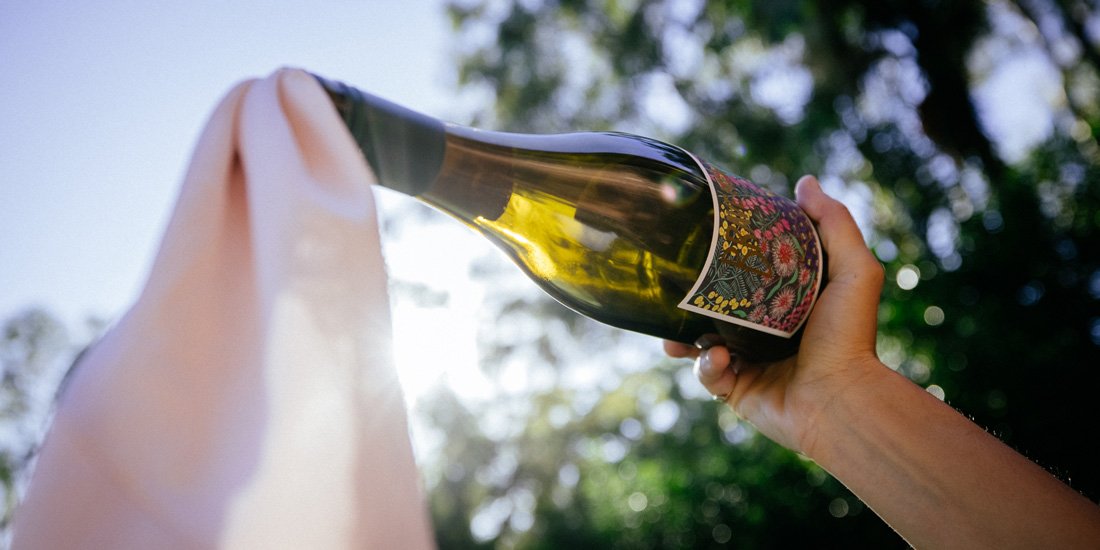
The Drop with Olivia Evans – understanding texture in wine
Slippery, gruff, crunchy and silky. These are words that we associate with textiles and physical touch, but less so when describing wine. A wine is not just about flavours or body but also about the sensations that play with the palate. So, what is texture in wine and how does it help us navigate our choices?
An important thing to know about wine is that to every rule, there is an exception. There is no one singular way of doing things, especially in Australia, where winemakers are free to express themselves as creatively and artfully as they please. We are talking specifically of wine made by hand and not by computers. Wine that has individuality due to a gentle nudge here and there from a winemaker, whose aim is to bring it safely to the bottle. Those decisions can have a lot to say for its texture.
Say you find yourself sat in a restaurant and notice a glass of unfiltered wine radiating at another table across the room. Its cloudy nature provokes an eagerness for something refreshing, a feeling of “I want what she’s having”. A winemaker has chosen to not filter the wine to give it personality and a crunchiness, similar to the satisfying quench of munching into a fresh green apple.
On an evening with a chill in the air, we reach for plush red wines that provide warmth. The slippery viscosity comes from well-integrated oak. A winemaker who finds this balance creates a feeling in the wine reminiscent of velvet that coats the mouth lavishly before slinking away.
The reason why a wine is juicy is often because it was made quite simply, with very little time spent in oak with the purpose of preserving fruit purity. Sometimes the wine could be aged in ceramic, amphora, concrete or stainless steel, which do not impart flavours or texture on a wine – uninterrupted grape juice.
Let’s not forget rosé or orange wines that are fermented with their skins. These blush and golden juices have captivated so many, often for the grippy framework they provide the palate. There is a drying sensation from the tannin in the skins that makes you want to lick the piece of skin under your top lip.
There are decisions made in a restaurant that will also affect the way that the textures interact with our palates. It’s important to consider levels of acidity when matching wine and food. It can create freshness and cohesion or an undesirable edginess or sharpness. Many winemakers choose to pick their fruit early to preserve the natural acidity, adding to the zippy, electric feel in the wine.
There is a comfort in choosing grape varieties you’ve drunk before and there are reasons they appeal time and time again. Considering their texture and being able to describe that sensation to a helpful wine professional creates a new world of tasting opportunities. Be free in talking about wines the way they feel to you and mostly, have fun with it. Remember, to every rule, there is an exception. There is no one singular way of doing things. Drink curiously!
Our knowledgable wine friend Olivia Evans is a certified sommelier, as well as a budding wine writer and documentarian. Look out for new editions of The Drop on the last Thursday of each month.
The Stumble Guide is our comprehensive Brisbane dining guide with more than 2400 places to eat, drink, shop and play.
